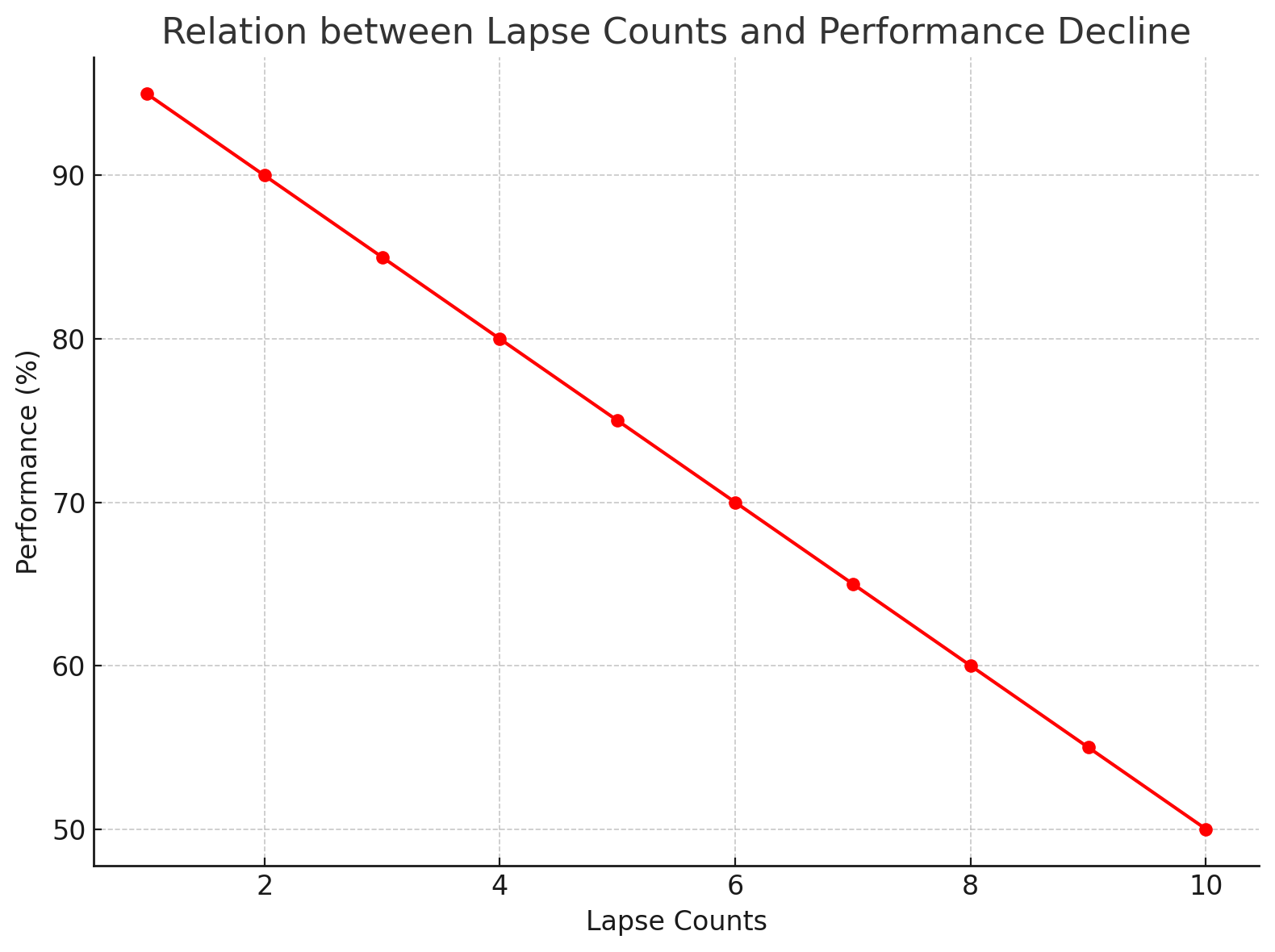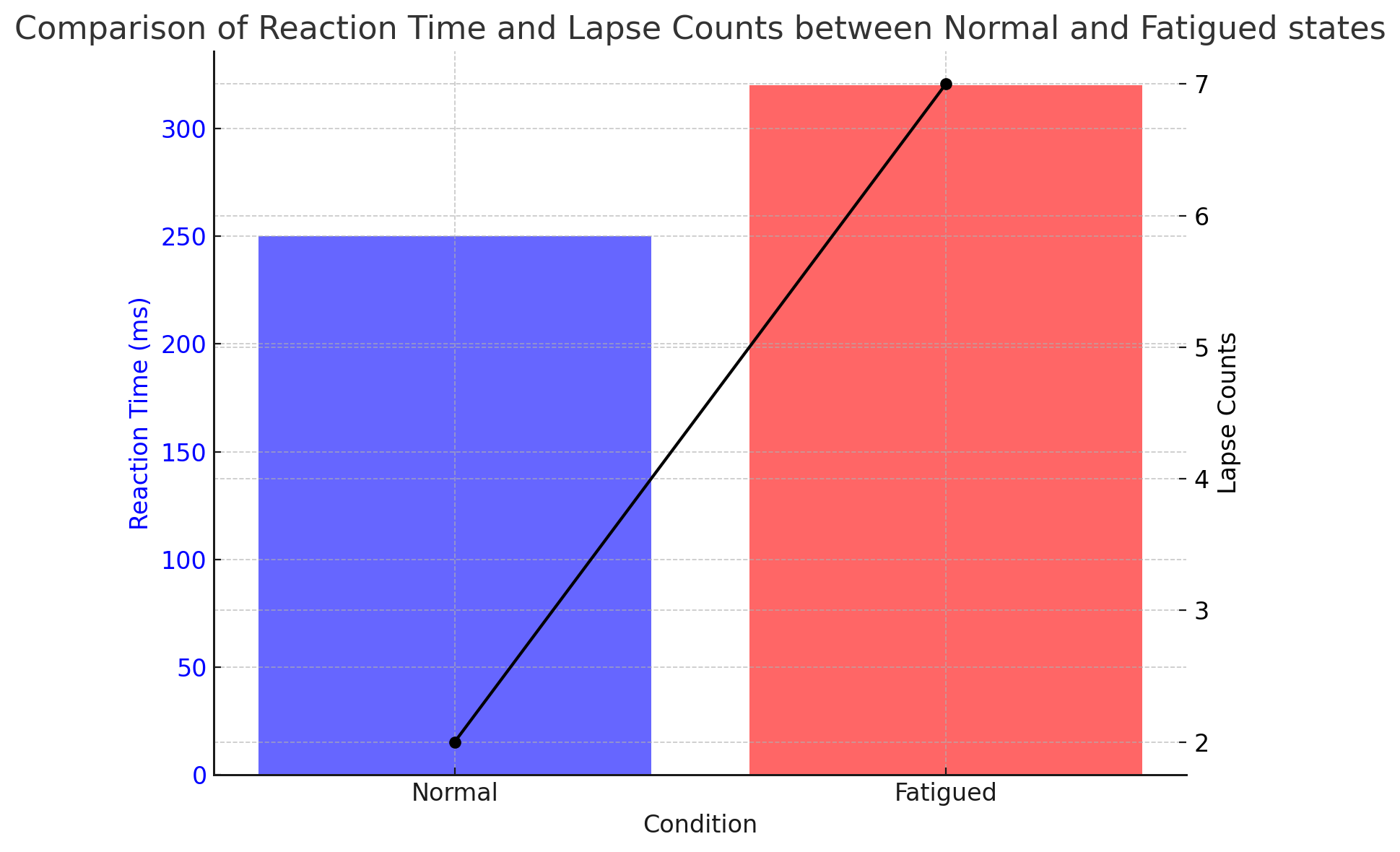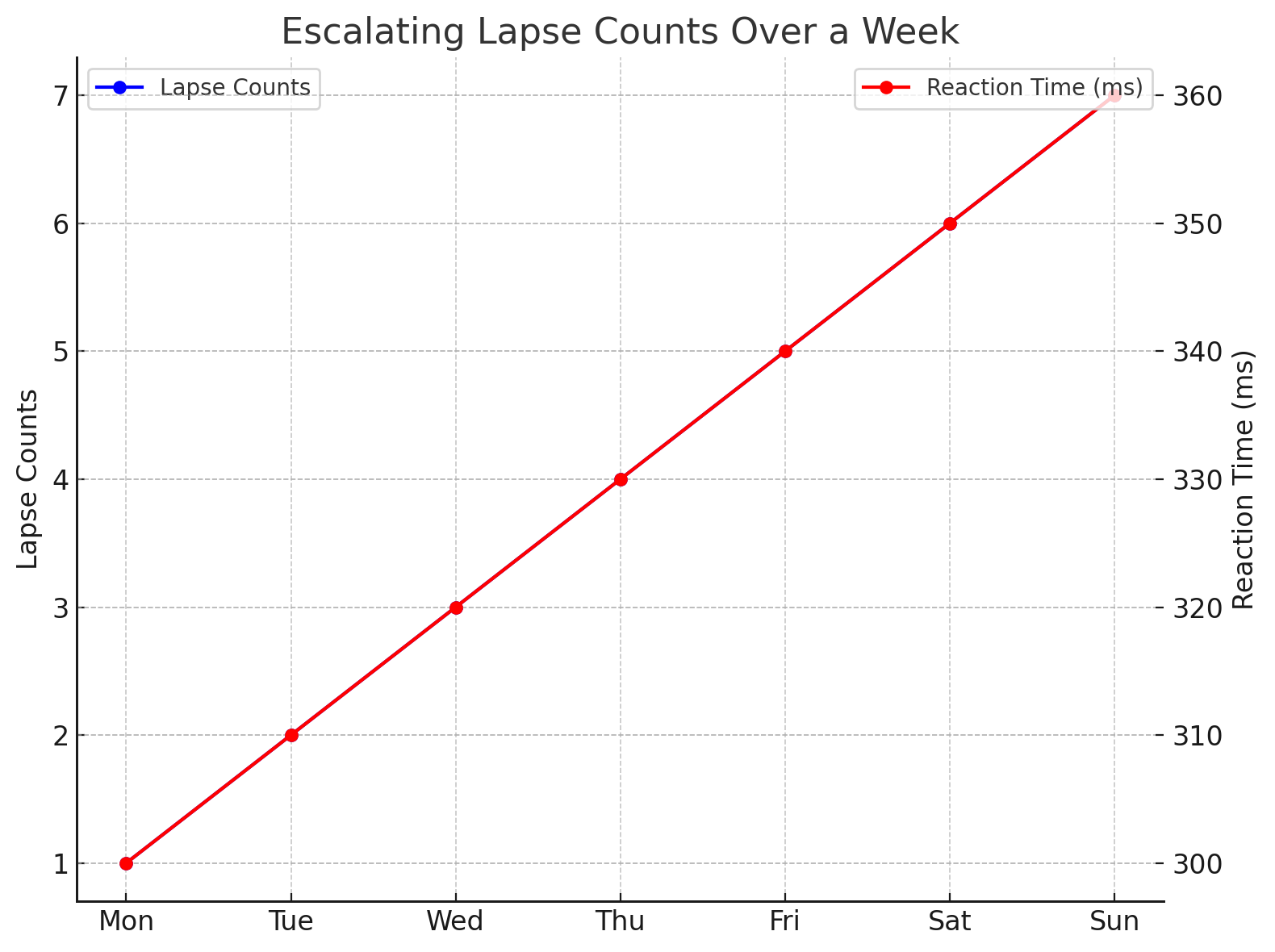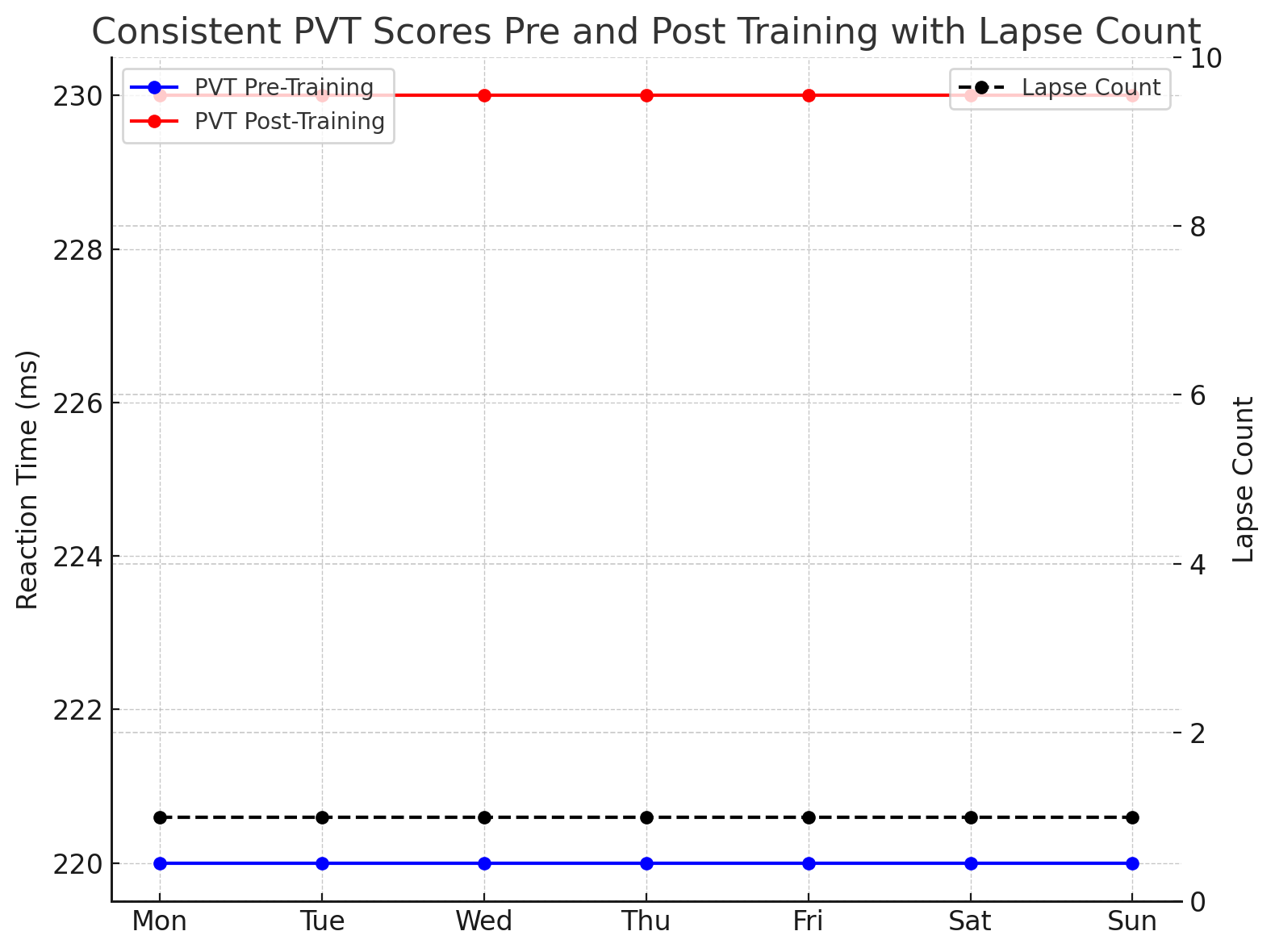React, Respond, Recover: Tackling Mental Fatigue with Lapse Analysis
Lapses are instances of significantly delayed responses, often rooted in diminishing mental vigilance or simple inattentiveness.

Mental fatigue, often overlooked, can be the silent saboteur, stealthily undermining an athlete’s performance. This article delves into the subtle yet powerful indicators of mental fatigue: PVT, PVT-B, and the Mackworth clock. These three cognitive tasks can be used to monitor levels of mental fatigue.
Understanding Lapses
As athletes push their limits, maintaining focus becomes paramount. Yet, the more tired the brain gets, the harder it becomes to stay attentive. This is where ‘lapses’ come into play. Lapses are instances of significantly delayed responses, often rooted in diminishing mental vigilance or simple inattentiveness. More than just momentary distractions, these lapses can be telltale signs of mounting mental fatigue. Recognizing them means understanding patterns such as slower reaction times, increased variability, and a rise in the overall count of such lapses. As a metric, they provide a window into the cognitive state of an athlete, serving as early warnings of potential burnout.
Number of Lapses during the Psychomotor Vigilance Task as an Objective Measure of Fatigue

Importance for Coaches
In the competitive world of sports, marginal gains can lead to monumental results. For a coach, recognizing and addressing even the subtlest of performance deteriorators can be the difference between victory and defeat. Mental weariness, indicated by an increase in lapses, can hinder an athlete’s performance, often in unnoticeable ways. But these silent signals, when identified early, offer invaluable insights. By closely monitoring lapse counts, coaches can not only gauge an athlete’s mental stamina but also forecast potential burnout risks. In essence, being attuned to these quiet indicators can empower coaches to make strategic decisions, optimizing both training sessions and game-day performances.
Methods to Measure Lapses
Understanding the concept of lapses is one thing, but how can they be effectively measured? The three tests described below are specifically designed to capture the nuances of mental fatigue in athletes.
Psychomotor Vigilance Test (PVT)
An established method that flags any response taking more than 500ms as a PVT lapse. It is a valuable tool for understanding delayed reactions that can hint at underlying mental fatigue.
The PVT-B Test
A variant of the PVT, this test classifies any response time slower than 355ms as a PVT-B lapse. It provides a slightly different threshold, making it suitable for certain sports or situations where quicker reactions are paramount.
The Mackworth Clock Test
Diving deeper into the intricacies of reaction time, this test deems any response over 650ms as a Mackworth lapse. It provides a comprehensive measure of an athlete’s sustained attention and vigilance over prolonged periods.
These tests, with their specific thresholds, offer tangible metrics that coaches can employ to assess an athlete’s attention span and reaction times. By integrating them into training routines and tracking the frequency of these lapses, a holistic picture of an athlete’s mental condition emerges, allowing for tailored training approaches.
How to Use Lapse Count Analysis in the Real World
Incorporating lapse count analysis into an athlete's training regimen provides a tangible approach to measure their mental fatigue and overall cognitive well-being. Here's a practical guide on how to implement and interpret this analysis using the PVT, PVT-B, and Mackworth Clock test:
Regular Testing: Administer either the PVT, PVT-B, or Mackworth Clock test both pre and post-training. This helps in establishing a baseline and then evaluating the impact of each training session.
Monitoring Over Time: Keep track of the lapse count daily, weekly, and monthly. This longitudinal data provides deeper insights into the athlete's cognitive endurance and resilience.

Identifying Patterns:
Escalating Lapse Counts: If, over a week, you spot an increasing trend in an athlete's reaction time, variation, and lapse count prior to their cognitive training, it might be a sign of mounting mental fatigue. In such cases, consider reducing cognitive stressors, allowing the athlete some downtime to recover mentally.

Consistent Scores Pre and Post Training: If you find that the scores on tests like the PVT-B remain relatively unchanged before and after training sessions, it indicates that the cognitive strain from the training isn't overwhelmingly taxing the athlete. Such consistency can be acceptable, especially during periods intended to be low-load weeks or in the run-up to a major competition.

Informed Training Decisions: Just as with physical exertion, recovery from cognitive strain is crucial. However, there may be times when the goal is to push an athlete to their cognitive boundaries to train their mental resilience. Recognizing the difference between these phases and making training adjustments based on lapse count data ensures that athletes are mentally prepared for the challenges ahead.
Lapse count analysis is more than just a tool; it's a window into an athlete's cognitive stamina. By integrating it into real-world training scenarios, coaches can offer a comprehensive training experience, ensuring athletes are prepared both physically and mentally for peak performance.
The silent signals of mental fatigue can be as impactful, if not more so, than any physical limitation. Lapse analysis, with its straightforward approach and actionable insights, offers coaches a powerful tool to ensure their athletes’ cognitive health is given the attention it rightfully deserves.
🌐 Connect With Us
🌍 Soma Technologies: Engineered to enhance human performance.
📸 Instagram: Dive into our world through exclusive photos and stories.
👥 Facebook: Join our community for the latest updates and discussions.
📈 LinkedIn: Connect with us professionally and stay informed about industry news.
🎥 YouTube: Watch our latest videos, tutorials.
🐦 X: Follow us for instant updates, news, and engaging tweets.
Research on Mental Fatigue:
Mental fatigue's impact on athletes is a burgeoning area of research. While the physical rigors of sports are well-understood, the cognitive demands remain underexplored. As athletes push their boundaries, the brain's resilience becomes just as crucial as muscular strength.
Impact on Team Sports:
- MF (Mental Fatigue) adversely influences SSMP (Specific Sport Movement Patterns) in team sports.
- The most relevant theory for future study could be the psychological model of exercise and its potential extension on attention resources, rather than the traditional “catastrophe” theory.
Effects on Skills and Performance:
- Mental fatigue negatively affects various sports skills of high-level athletes.
- The impact is greater on offensive skills than on defensive skills concerning the role of athletes.
- Impaired executive functions might be responsible for the negative effects of mental fatigue on skilled performance.
Factors and Future Studies:
- The duration and intensity of the physical task are crucial in the decrease in physical performance due to mental fatigue.
- Future studies should focus on inducing mental fatigue appropriately and exploring the role of the cognitive component.
General Observations:
- Mental fatigue increases subjective feelings of fatigue and decreases cognitive performance.
- Research suggests mental fatigue impairs sport-related performance during exercises performed at a submaximal intensity.
- The negative impact seems to be mediated by an increase in the perception of effort.
